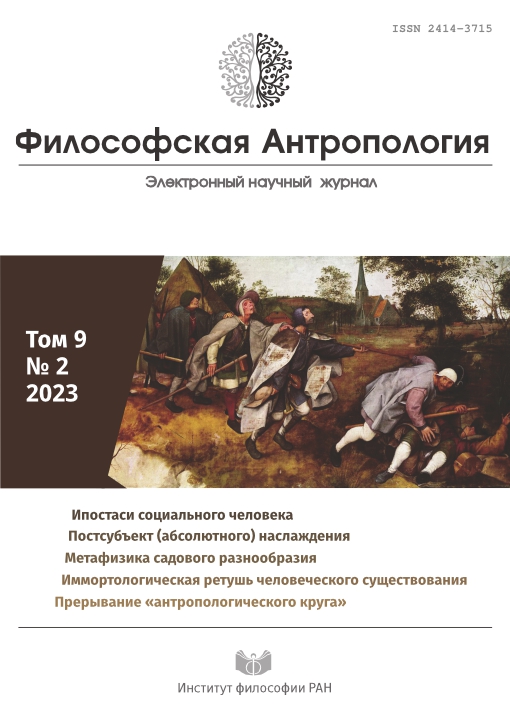The Philosopher’s plant: An Intellectual Herbarium (Leibniz’s Blades of Grass (chapter 7), Kant’s Tulip (chapter 8))
DOI:
https://doi.org/10.21146/2414-3715-2023-9-2-40-77Keywords:
: identity of the indistinguishable, phytophenomenology, garden within a garden, law of continuity, monad, theoretical understanding, practical reason, teleological judgment, aggregates without a system, free beautyAbstract
The seventh chapter is dedicated to Gottfried Leibniz. In a letter to the English philosopher Samuel Clark, Leibniz recalls the episode in the park in connection with his famous principle of the identity of the indistinguishable, or simply "Leibniz's law". The futile search for two exactly identical leaves or blades of grass highlights a metaphysical principle that extends to the smallest elements of nature. If there are not two exactly the same, then they all bear the stamp of uniqueness and individuality, ultimately going back to the wisdom of the Creator. The ethical implications of this ontological axiom are obvious: to destroy a leaf, let alone a whole plant, means to get rid of something that will never appear again in exactly the same form. If there are many species of plants and if each species includes a myriad of subspecies, it is because they all must exist to actualize the infinite possibilities of Divine self-expression. The loss of biological diversity diminishes the richness of manifestations that God finds in the world. From the real park, the philosopher leads us into an allegorical garden depicting his understanding of matter. In paragraph 67 of Monadology, he urges us to imagine every part of matter like a garden full of plants and a pond full of fish. But every branch of a plant, every member of an animal, every drop of its juices is again the same garden or the same pond. Each part of matter, accordingly, is a garden within a garden within a garden — and so on ad infinitum. Thus, it can be said that the plant, as its capabilities become more relevant, expresses (a) the world, (b) God's vegetable view of (a), and (c) essence. As a non-verbal sign, it is oversaturated with meaning, it is entrusted to bear the weight of theological and metaphysical entities partially revealed through it. One can only welcome the philosopher's bold assumption that a plant is not a passive object available for manipulation by humans and animals, but a subject endowed with the ability to act. However, the weak point of this statement lies in the double comparison of animals with humans and plants with animals. The standard that all other living beings must meet is hopelessly anthropocentric, since it implies that animals are less perfect people, and plants are less perfect animals. Thus, an ancient metaphysical prejudice creeps into the philosophical system, which boldly put forward the vegetative idea of infinite matter and the expressive uniqueness of each leaf and each blade of grass.
The eighth chapter deals with Immanuel Kant. In his penchant for abstraction, Kant reduces flowers to specimens of pure color, and tulips seem to him the purest of all. Its simple form does not distract us from the beauty of its pure color, and in this it perfectly matches the asceticism of Kant's philosophy and the austere splendor of his aesthetic thought. Kant views tulips as examples of completeness «belonging to no purpose», where by «purpose» he means those practical tasks associated with economic activity in the broad sense of the word.
The meaning and essence of the tulip varies according to the field in which we encounter it: as a natural object of study and scientific inquiry, as a useful object of our practical interest, or as an alluring embodiment of the beautiful. In his personal writings of the 1760s, Kant defends the thesis that a plant is possible only in accordance with an idea, defining the latter as the a priori cognition of the understanding by which an object becomes possible.
If the material aspects of human existence, according to Kant, do not deserve respect, then even less do non-human animals and plants, which have no share in the rationality of transcendental subjects. There is only one possibility of placing plants and animals under the umbrella of Kantian respect, and it has to do with human self-respect. Kant does not abandon the idea that flowers are vital links in the chain of plant reproduction by which the genus is preserved.
In flowers, and in aesthetics in general, Kant sees a utopian prefiguration of human freedom. When he calls flowers «free beauty», he means their liberation from both natural necessity and conceptual understanding.

